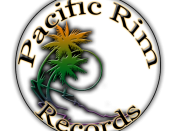Figure 1 presents the current structure or value chain of the music market [11]. This illustration explains simply how music moves a creative artist to its final destination, a consumer. Musicians typically come with a sample of their music to a music publisher or an artist & repertoire (A&R) manager of a record company. If this initial 'gate keeper' find the music promising, negotiations start [12]. A contract is signed with a music publisher. Recording is undertaken and then a copies of the recording are pressed and promoted to both retailers and the media. After recording, a marketing plan is drafted for diverse audiences, not just the ultimate consumer.
Only a small proportion of all samples submitted to 'gatekeepers' will result in commercial recordings. This filtering is a characteristic of many other entertainment industries as well [13]. Financial means and industry contacts are used by music publishers and record companies to attract attention to new releases and create demand.
Gates (intermediaries at critical 'control points' that select and validate information passing through them) that need to be passed before an audience is reached include the media (radio, television, music press), retail business, and organizations that control schedules and venues for live performances. These are gates to different, though related audiences. How exactly the different audiences of music are related depends on the kind of music involved, as well as on the social and historical developments that have led a particular 'system of provision' of music to emerge [14]. Here, I will focus on the position of music publishers and record companies as part of the music industry, leaving a fuller description and analysis of this industry to others [15].
At present, as Table 2 shows, a few record companies dominate national music markets as well as the global marketplace [16].


